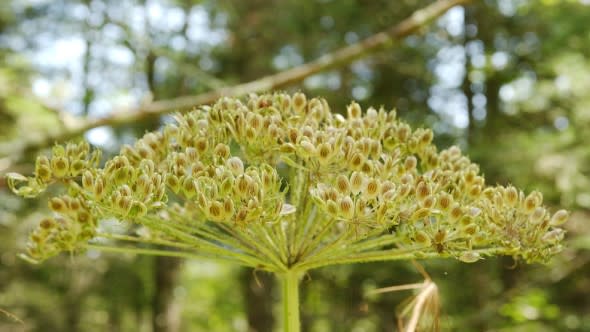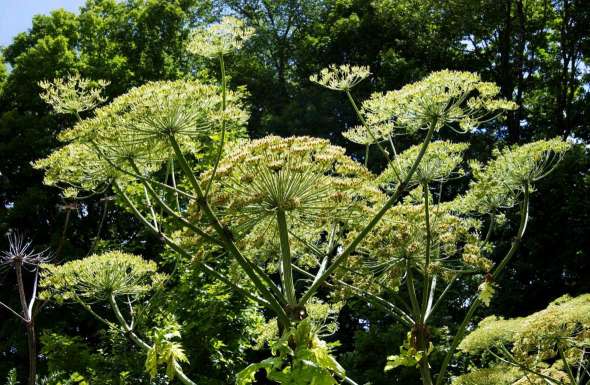How to protect yourself from hogweed, a plant that can burn and blind you
You may have never heard of it before, but a not-so-new type of weed has again infested parts of Canada - and it can be very dangerous.
Giant hogweed (Heracleum mantagazzianum) has been known to cause rashes, burns and, in some very extreme cases, blindness to those who are unfortunate enough to come in contact with the plant.
Hogweed is a perennial, meaning that each spring it comes back and starts to bloom. It can get very tall, over 15 feet in the right conditions.
According to the New York Department of Health, it is very possible for hogweed to be mistaken as wild parsnip, which also can cause burns.

A spent flower head covered with seeds of the giant hogweed plant is seen in Hanover, N.H. Triggered by light, a toxin in hogweed sap attacks human skin, causing swelling, burns, blisters and permanent, purplish scars, and is probably the most dangerous plant in the state. (AP Photo/Jim Cole)
Hogweed is very distinct looking and is actually part of the carrot family. It has thick leaves that can stretch up to 5 feet wide as well as large clusters of white flowers at the top of the plant that form an almost umbrellalike pattern. The plant's stems are usually green with purple spots and white hairs coming off them.
It should be noted, however, that hogweed is not localized to Canada even though that is where it is most prevalent. According to National Geographic, the dangerous plant was spotted for the first time in Virginia. It also appears often in parts of the Pacific Northwest as well as the northeastern United States.

(AP Photo/Steve Miller)
Experts say it is best to avoid the plant at all costs. However, brushing up against it will not necessary lead to a severe reaction. The plant's sap contains a chemical, that when mixed with sunlight, causes a reaction on the skin. Blindness can occur if the sap gets in your eyes, however.
The best thing you can do if you come in contact with giant hogweed and its sap is to wash the area that came in contact with the plant thoroughly with soap and water. On top of that, if you come in contact, do all you can to avoid sunlight for at least two days.
If burns become worse, you should see your doctor as soon as you can.
According to the New York State Department of Health, if you must remove hogweed, the best way to do it is contact a professional plant control specialists and not to do it yourself. However, if you must touch the plant, wear disposable rubber globes, a long-sleeve shirt and pants. If you happen to get sap on your clothing, remove them carefully avoiding contact with your eyes and skin. Wash the clothes separately from other laundry with warm water and detergent.
For more safety and preparedness tips, visit AccuWeather.com/Ready.

